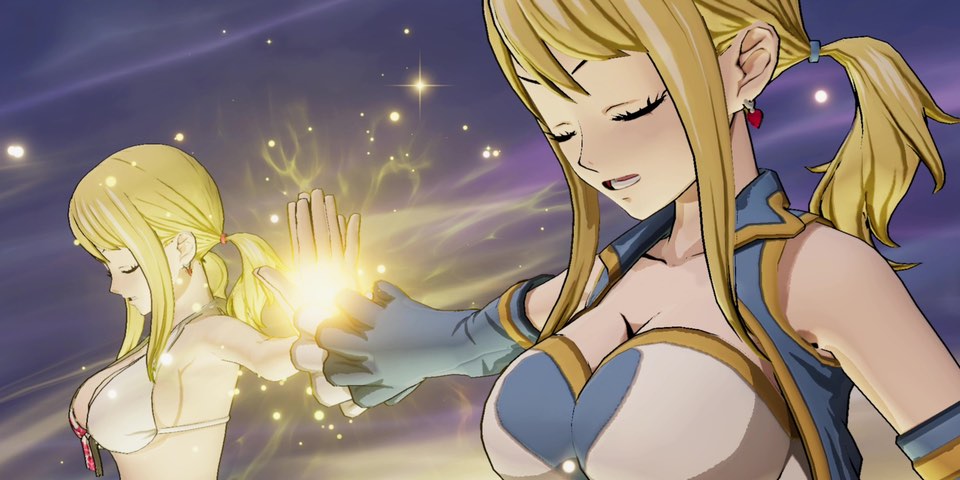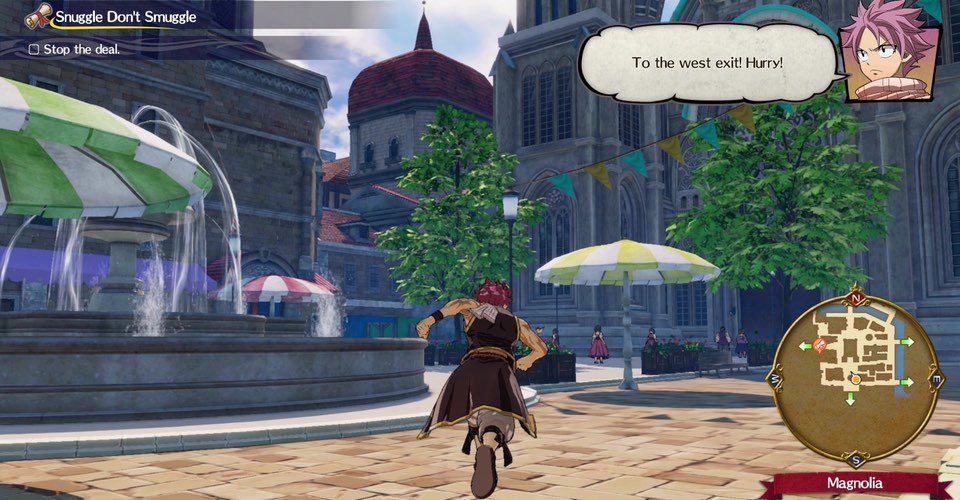Far too many anime video games feel like tone deaf cash grabs forcing ill suited genres onto unsuspecting anime and manga franchises. So when Koei Tecmo announced a video game version of Fairy Tail, I was ready to roll my eyes at another arena brawler or Warriors clone and move on, but when they then revealed that Fairy Tail would be a console RPG experience from the developers of the Atelier series, I was all in.
Now, truth be told, I’m not much of a Fairy Tail fan. I’ve adored the art style and character designs that I’ve seen in passing over the years, peeking at random trailers or scrolling through screenshots from the anime and pages from the manga being shared on social media. I’ve barely read or watched anything from the series though, and went into this video game version of the hit franchise pretty blind. Most of the time, anime games like these will give you a brief rundown of the world and the protagonist or jog you through the opening moments of the story to get you up to speed.
Koei Tecmo’s Fairy Tail ain’t got time for that.
As soon as you start the game, you’re tossed straight into a boss fight against a glowing evil mage named Hades, attacked by a giant blue dragon, and trapped in a time-bubble stasis for seven years as the rest of the world moves on. As fans of the series might know, and as I learned by rushing to the Fairy Tail Wiki to figure out what the hell was going on, this was a hyper-abridged version of the final moments from the Tenrou Island arc, a story arc that takes place nearly a hundred episodes or two hundred chapters into the original series.
The Fairy Tail game is not interested in getting newcomers caught up in the slightest, so unless you’re experienced with the original story or you’re just an open-minded person who knows how to smile and nod at absurd anime jargon like Dragon Slayer Magic and Celestial Spirit Keys, you’re going to be really lost really quick when you play this game.

Don’t expect the Fairy Tail game to be a thorough retelling of the original tale. Rather than laboriously adapting the major story beats of the anime like you’d see out of a series such as Naruto: Ultimate Ninja Storm, Fairy Tail is more focused on giving you an opportunity to live in the world of the series and experience the quieter moments with the members of the Fairy Tail guild.
The game begins with you returning to your guild after seven years to find it in a decrepit state and with zero funds or fame, forcing the magic users that call it home to do their best to bring the guild back to its former glory. At the outset, this seems like nothing but repetitive busy work as you accept a mission from the request board to kill a thing, go kill that thing, and then return to the guild to do it again.
I was hooked during these repetitive opening moments, though, thanks to the wonderful RPG gameplay. The world of Fairy Tail is heavily focused on magic users, and the combat emulates that by encouraging you to use Magic attacks as often as possible, since standard attacks do little damage and defeated enemies restore your mana. With enemies taking up spots on a 3×3 grid in front of you and your Magic abilities each having different grid-pattern attack areas, it pays to play smart and choose Magic attacks with matching areas of effect to dish out maximum damage. Gust’s previous games never really prioritised combat, but by layering on new gameplay mechanics as you progress, like Awakening buff systems, Magic Chain combo attacks, andmixed elemental abilities, they’ve made a truly rewarding RPG experience.

Deeper elements of the story, and activies open up as you progress. Doing Request Board missions can earn Guild points and money that you can use to rank up characters or upgrade base facilities. As characters fight together, they can increase their bonds and unlock special dialogue scenes or Character Missions. There’s also a huge variety of characters to use in your four-person party, and they all have delightful little interactions whenever you go on a Request mission or do Character Missions and bonding events.
I picked up on the dynamics between the crew of Fairy Tail pretty quickly thanks to these scenes, and came to love just how charming and silly everyone was in their down-time and post-quest conversations. This is a game that wants to relish in the smaller and quieter moments of the series, and it’s that low-key charm that Gust had spend decades mastering with the Atelier series that makes this game so endearing.
Those small moments do come at the expense of the bigger beats of the story. The Fairy Tail game adapts two major arcs from the middle of the original story – the Grand Magic Games and the Tartatus arc – but to say the game “adapts” these stories is a bit of a stretch. Truth be told, the game speeds through a lot of moments from both of these stories to the point that I sometimes lost track of what was happening.
At one point during the Grand Magic Games, a tournament between eight different teams of mages, a person from each team has to participate in a mysterious competition called “Hidden.” Rather than explain the rules and actually show us the competition as I’m sure happened in the original story, we’re instead treated to a two-sentence summary of the events by Lucy and never actually given an explanation for what the rules were or how it happened.

If you know the original story you won’t be lost at all, but I often felt like the game put the minimum effort into bringing these main story beats to life, sometimes even having characters appear as disembodied text-boxes in the middle of story scenes, but with no 3D character model to represent them.
If one element of these big story arcs came across perfectly, it was the boss fights. Shonen anime love to have a big, bad enemy grow stronger and stronger during confrontations, busting out multiple forms and secret weapons and ultimate techniques to extend the battle. The Fairy Tail game emulates this perfectly, having you empty the gigantic health bar of a boss only for them to chuckle, talk about pushing their limits like never before, and getting an even bigger health bar. Touches like that, alongside the sharp anime-exact character models and addictive high-fantasy adventure music that accompanies every scene help bring the aesthetic of the franchise to life in a really powerful way.

